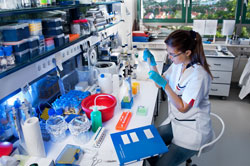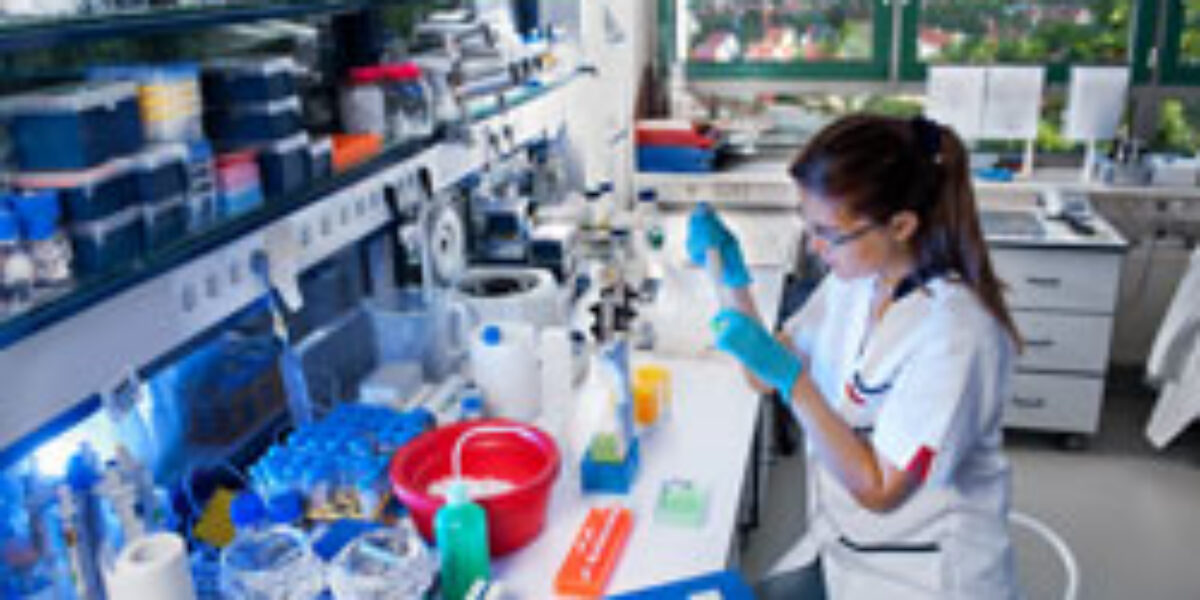Is Biotechnology Coming in From the Cold in Europe?
 Since genetically modified (GM) food was first introduced in Europe in the 1990s, consumers have been portrayed as sceptical and generally opposed to buying such products. However, is this really the case? Recent studies show over and again that consumer perception in the EU is actually much more favourable towards GM foods than it is commonly depicted. Now, with second-generation genetic-modification techniques avoiding some of the issues that previously provoked hostility, the European Union (EU) may be modifying its previously tough stance on the issue.
Since genetically modified (GM) food was first introduced in Europe in the 1990s, consumers have been portrayed as sceptical and generally opposed to buying such products. However, is this really the case? Recent studies show over and again that consumer perception in the EU is actually much more favourable towards GM foods than it is commonly depicted. Now, with second-generation genetic-modification techniques avoiding some of the issues that previously provoked hostility, the European Union (EU) may be modifying its previously tough stance on the issue.
Biotechnology uses living organisms to make useful products. Production may be carried out by using intact organisms such as yeasts and bacteria or by using natural substances from organisms. Biotechnology makes use of biological systems and processes to manufacture useful products and provide services. It has been used for more than 6,000 years for lots of interesting and practical purposes, including making food such as bread and cheese, preserving dairy products and fermenting beer.
There are three main strands of biotechnology. Healthcare biotechnology>refers to a medicinal or diagnostic product or a vaccine that consists of or has been produced in living organisms and may be manufactured by combining DNA sequences that would not normally occur together. Agricultural biotechnology encompasses a range of modern plant breeding techniques and aims to improve crops in more targeted ways, the best known of which is genetic modification. Industrial biotechnology uses enzymes and micro-organisms to make bio-based products in sectors such as chemicals, food and feed, detergents, paper and pulp, textiles and bioenergy.
The restrictive stance of the EU regarding genetically modified organisms has frustrated major corporations and scientists. However, there are now signs that European politicians might be slowly opening up concerning policy on genetically modified organisms. In May, the European Food Safety Administration released guidelines for assessing health and environmental risks related to GM animals. This was seen by many as a recognition that applications for raising GM animals will be coming soon and that the EU is preparing to at least deal with them.
Due mostly to the agricultural situation in the EU, the approach to genetically modified organisms has been far less progressive in the EU than in the US. European agriculture is heavily subsidized and protected, and politicians in many major EU countries are heavily influenced by the agricultural lobbyists. There is no incentive to bring in GMOs into the EU, and further resistance comes from the organic farming movement and environmentalists, among others.
Therefore, countries in the EU have been losing ground in the international race to grow more food on increasingly scarce land. This has grave and urgent implications for the EU science base and the environment as well as for domestic food security, employment and economic growth. Biotechnology can play a major role in the sustainable intensification of agriculture, improving efficiency in production and avoiding further loss of biodiversity. Nonetheless, things may now be changing at the national level.
 In early 2013, Environment Secretary Owen Paterson said that the British public should be persuaded of the benefits of genetically modified food. Paterson’s statement was a key signal of the government’s intent to expand agricultural biotechnology and make the case for GM food in Europe. Paterson told the Oxford Farming Conference: "We should not be afraid of making the case to the public about the potential benefits of GM beyond the food chain – for example, reducing the use of pesticides and inputs such as diesel. I believe that GM offers great opportunities but I also recognise that we owe a duty to the public to reassure them that it is a safe and beneficial innovation."
In early 2013, Environment Secretary Owen Paterson said that the British public should be persuaded of the benefits of genetically modified food. Paterson’s statement was a key signal of the government’s intent to expand agricultural biotechnology and make the case for GM food in Europe. Paterson told the Oxford Farming Conference: "We should not be afraid of making the case to the public about the potential benefits of GM beyond the food chain – for example, reducing the use of pesticides and inputs such as diesel. I believe that GM offers great opportunities but I also recognise that we owe a duty to the public to reassure them that it is a safe and beneficial innovation."
Things are also moving in Spain, which has a long tradition of scientific excellence, particularly in the life sciences. In the past decade, the country has focused on transforming its research into consumer-focused companies and products. This advance has come about in large part because of a national and local government focus on increasing the country’s prominence in biotechnology. Companies such as Advancell and Oryzon Genomics attribute some of their success to government support and to the network of science parks around the country that provide facilities for young companies.
Biotechnology uses living organisms to make useful products. Production may be carried out by using intact organisms such as yeasts and bacteria or by using natural substances from organisms.
In Sweden, Prime Minister Fredrik Reinfeldt recently confirmed the country’s largest ever investment in the life sciences. Speaking at SciLifeLab in Stockholm, a major research infrastructure project aimed at maintaining the country’s position in protein science, Reinfeldt announced a package of measures totalling £1.2bn over the next four years, of which £210 million is devoted to life sciences. Most of the money will be invested in the Stockholm-Uppsala biocluster, which is home to more than 50% of Sweden’s thriving life science companies.
An increasing number of biotechnology products are now receiving approval. This is encouraging news for investors in the sector concerned about regulatory risk and the time and expense associated with developing new products. It is potentially good news for companies seeking to replenish their pipelines. Ultimately, of course, it is positive news for consumers, who, for example, may need breakthrough treatments for increasingly urgent health challenges.


